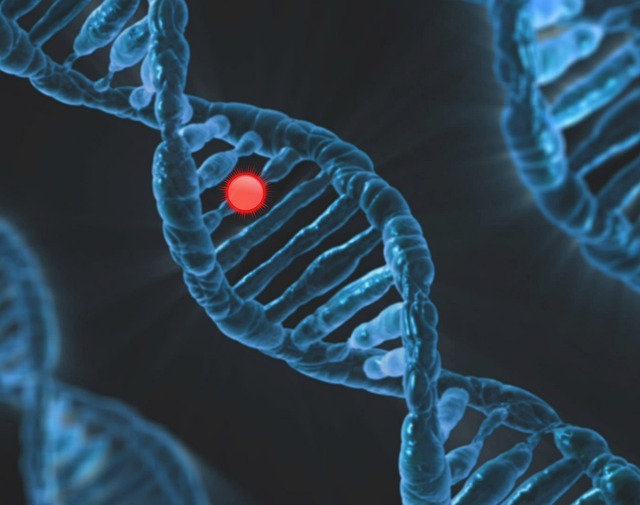An overview of rare diseases, their impact on patients and the challenges in diagnosis and treatment.
The Hidden World of Rare Diseases: An Introduction
The world of rare diseases is often overlooked, but it is estimated that there are over 7,000 rare conditions affecting approximately 400 million people worldwide. These diseases are classified as rare if they affect fewer than 1 in 2,000 people in the population. While individually rare, collectively they affect a significant number of individuals and pose a significant burden on those living with them and their families.
Rare diseases are often chronic, progressive, and life-threatening conditions, with many having no known cure. The symptoms may vary from mild to severe, and they can manifest in many different ways, such as physical, cognitive, or sensory impairments. Many rare diseases are also genetic in nature, which means that they are inherited from one or both parents.
Despite the number of people affected by rare diseases, there is still a lack of awareness and understanding of these conditions. This lack of knowledge can lead to delayed diagnoses, misdiagnoses, and ineffective treatments. It can also result in social isolation and discrimination for those living with rare diseases and their families.
"If You've Met One Person with a Rare Disease…": The Diversity of Rare Conditions
Rare diseases are a diverse group of conditions, each with their unique symptoms, causes, and treatments. It is often said, "If you've met one person with a rare disease, you've met one person with a rare disease." This statement emphasizes the individuality of each person's experience with their rare condition.
There are several categories of rare diseases, including genetic, autoimmune, infectious, and degenerative diseases. Some rare diseases affect specific organs or systems in the body, while others have systemic effects that impact multiple body systems.
The symptoms of rare diseases can also vary widely, both within and between different conditions. Some rare diseases cause visible physical changes, such as craniofacial abnormalities or skin lesions, while others may cause invisible symptoms, such as chronic fatigue or pain. Additionally, rare diseases can impact cognitive and mental health, resulting in conditions such as autism or schizophrenia.
The rarity of these conditions often means that diagnosis and treatment can be challenging. Many rare diseases have overlapping symptoms with more common conditions, leading to misdiagnosis or delayed diagnosis. Additionally, with fewer individuals affected by each condition, research into rare diseases can be limited, making the development of effective treatments and cures more difficult.
Diagnosing the Undiagnosed: Challenges and Progress
The diagnosis of rare diseases is often a complex and lengthy process, with many individuals facing significant delays or misdiagnoses. This can be due in part to the rarity of these conditions, as well as the wide range of symptoms and the lack of awareness and understanding among healthcare professionals.
- Challenges in Diagnosis:
One of the primary challenges in diagnosing rare diseases is the lack of available information and resources. Many healthcare professionals may not have encountered certain rare conditions in their practices, leading to a lack of knowledge and understanding around diagnosis and treatment. Additionally, the rarity of these conditions means that there may be limited research or data available on the condition, making it difficult to identify and diagnose. - Progress in Diagnosis:
Despite these challenges, there have been significant advances in recent years towards improving the diagnosis of rare diseases. The development of new technologies, such as genetic sequencing and biomarker testing, has helped to identify previously unknown conditions and improve accuracy in diagnosis. Additionally, increased awareness and collaboration among healthcare professionals and patient advocates have helped to improve access to information and resources for both patients and providers. - The Role of Patient Advocacy:
Patient advocacy groups have played a crucial role in advancing the diagnosis and treatment of rare diseases. These groups often work to raise awareness and support for specific conditions, as well as funding research and advocating for policy changes to improve access to care. Additionally, many patient advocacy groups provide resources and support for individuals and families affected by rare diseases, helping to navigate the complex landscape of diagnosis and treatment.
A Call for Collaboration: The Importance of Research and Support
The diagnosis and treatment of rare diseases require a collaborative effort from healthcare professionals, researchers, patient advocates, and policymakers. Through increased collaboration and support, we can work towards improving access to accurate diagnosis, effective treatment, and a better quality of life for those affected by rare conditions.
Research is a crucial component in advancing our understanding of rare diseases and developing new treatments. However, funding for rare disease research is often limited, with only a small percentage of research funding allocated to rare diseases. This highlights the need for increased support and advocacy for rare disease research, as well as increased collaboration among researchers and institutions.
Patient advocacy groups also play a vital role in providing support and resources for individuals and families affected by rare diseases. These groups often work to raise awareness, provide education and support, and advocate for policy changes to improve access to care and treatment. By working together with healthcare professionals and researchers, patient advocacy groups can help ensure that the needs and perspectives of those affected by rare diseases are taken into account in research and treatment development.
Finally, policymakers have an important role to play in supporting research and improving access to care for those affected by rare diseases. This includes funding for research, ensuring that regulatory processes are efficient and accessible, and promoting policies that support patients and families affected by rare diseases.
Increased awareness, research and collaboration can lead to better outcomes for those affected by rare diseases.
